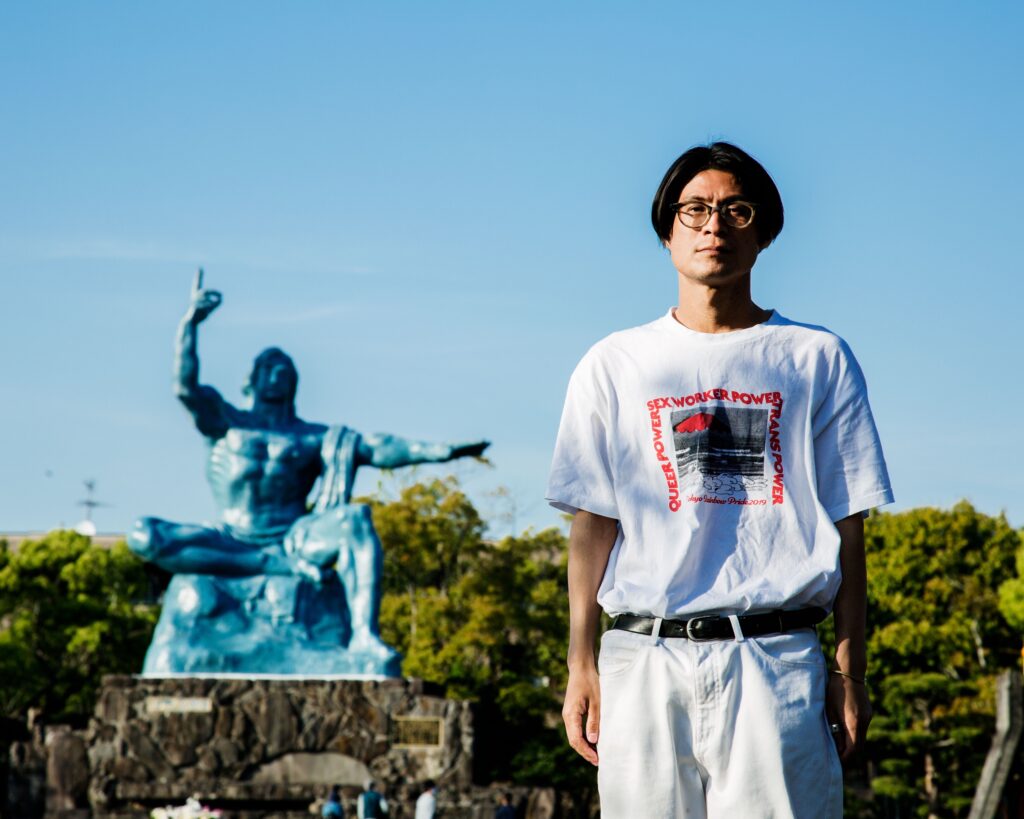
2022, Inkjet print, 29.4×36.7cm

2015, Inkjet print, 29.4×36.7cm

2021, Inkjet print, 29.4×36.7cm

2016, Inkjet print, 29.4×36.7cm
Dates|May 11 – June 2, 2024
Venue|MEM map
Open Hours|13:00 – 19:00
The gallery is closed on Mondays that are not national holidays. (Except when Monday falls on a holiday, in which case the gallery is open and closed the following day.)
Telephone|+81-3-6459-3205
Talk Event
Participants|Odawara Nodoka (Sculptor, Art Critic, Publishing Company Representative) and Kanagawa Shingo
Venue|MEM
Admission|1200 yen
Capacity|20 Persons, Reservations necessary
Japanese version only.
This event will be live-streamed and will be available for viewing on MEM’s youtube channel.
After the talk, there will be an opening reception.
The images showcased in this exhibition revolve around the Nagasaki Peace Park and the Peace Memorial Statue, which stands at its center. Historically, Nagasaki harbored ‘hidden Christian’ communities throughout the Tokugawa shogunate’s ban on Christianity from the early 1600s to the mid-19th century. Kanagawa’s images capture commonly observed subjects in the vicinity, such as statues of the Virgin Mary and Christ, Catholics engaging in prayer before home alters, and individuals, buildings, or places that have some sort of connection to the Christian faith. Amongst these images, Kanagawa intersperses self-portraits.
In 2013, Kanagawa was baptized in a Lutheran church in Shin-Okubo, Tokyo. Regarding this, he says the following, “Faith is not something that can easily be separated into believing or not believing; faith is a matter of trying to believe or wanting to believe, which is to say that not believing is also included in what it means to have faith.”
Regardless of this not-believing aspect of his faith, Kanagawa decided to be baptized because he felt that “prayer was good for (him).” He explains, “I felt that the essence of prayer lay not in the certainty of the existence of God to whom we direct our thoughts and words, but I felt that the essence of prayer lay in the act of directing our thoughts and words itself. Of course, it would be an overstatement to say that this act alone will bring into existence that object of attention, but the reality of that existence manifests over time.”
At the suggestion of sculptor and critic Nodoka Odawara, in 2015, Kanagawa began to visit and photograph Nagasaki. Odawara was Kanagawa’s classmate at the graduate school at the Tokyo University of Arts and has researched and authored essays examining the historical context surrounding Nagasaki’s atomic bomb-related sculptures. At first, Kanagawa’s camera focused on subjects that represented Nagasaki’s Christian culture due to his faith, but he became increasingly drawn to the Peace Memorial Statue as an icon for prayer. While critical of the historical background of the statue’s origins, Kanagawa is attracted to the emptiness of the statue’s colossal and excessively muscular physique and its heterogeneous nature, which stems from its attempts to avoid adherence to any particular religion, and he states, “Personally, I like the statue.” He also acknowledges issues related to masculinity, which he himself is implicated in.
While Nagasaki is often referred to as “Nagasaki of Prayer,” in this exhibition Prayer|Nagasaki, Kanagawa employs his own body and faith as a medium, endeavoring to create a novel photographic representation of the city.
Artist Profile
Kanagawa is a photographer born in Kyoto in 1981. He graduated from Kobe University with a B.A. from the Faculty of Human Development. In 2015, he completed a doctoral program at the Graduate School of Fine Arts at the Tokyo University of Arts. Since 2008, as a graduate student at the Tokyo University of Arts, he photographed his father, who periodically went missing, for his series titled father. Since 2010, he has photographed his aunt on his father’s side, for his series for a while, who has also gone missing for several years. These photographs were published in photobooks including writings from his diaries recording his contact with them. Although inter-familial relationships are highly personal, his photographs and words are straightforward and sometimes imbued with a sense of humor, an approach that differs from documentary that has become a topic of interest. Since then, he published Heimsynergy, which captures his intimate relationships with his roommates, and the documentary novel Inakunattenai Chichi (“Father Who Isn’t Missing”), in which he reiterates and writes about his relationship with his father. He continues to present works based on the relationship between self and others, photography and words. His major works include father (Seigensha, 2016), Sannin no Nikki, Shugou Kaisan! (Diary of Three People, Assemble Dismissed”) co-authored with Ichiko Uemoto and Yūshō Takiguchi, for a while (Nanarui), and Inakunattenai Chichi (“Father Who Isn’t Missing”) (Shobunsha), and others. His recent major exhibitions include for a while at the Yokohama Civic Gallery Azamino in 2018, Roppongi Crossing 2022: Coming & Going at the Mori Art Museum in 2022. He has received the Jun Miki Award and the Sagamihara Photography Newcomer Encouragement Award. A book on Christian culture and peace statues in Nagasaki and Kanagawa’s faith with the same title as this exhibition is scheduled to be published in 2024 by Shoshitsukumo, a publishing company headed by Odawara Nodoka.